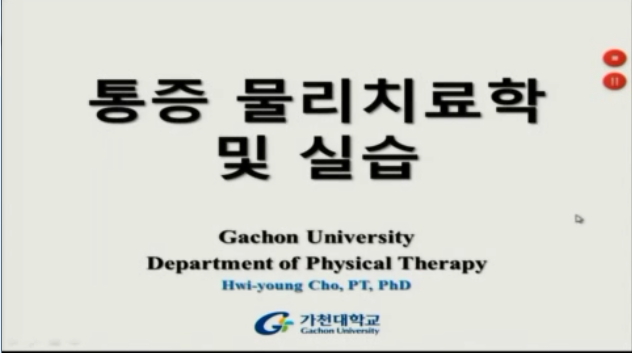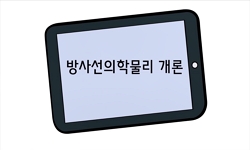Sesamoid bones and accessory ossicles are normal anatomic variants with varying morphological appearances and incidences. They are usually small osseous fragments with well-corticated margins located adjacent to the joint space and bone. Patients with...
http://chineseinput.net/에서 pinyin(병음)방식으로 중국어를 변환할 수 있습니다.
변환된 중국어를 복사하여 사용하시면 됩니다.
- 中文 을 입력하시려면 zhongwen을 입력하시고 space를누르시면됩니다.
- 北京 을 입력하시려면 beijing을 입력하시고 space를 누르시면 됩니다.


증상이 있는 종자골과 부골의 임상적 소견과 영상적 감별진단: 임상화보 = Clinical Features and Radiological Differential Diagnoses of Symptomatic Sesamoid Bones and Accessory Ossicles: A Pictorial Essay
한글로보기https://www.riss.kr/link?id=A107266899
- 저자
- 발행기관
- 학술지명
- 권호사항
-
발행연도
2021
-
작성언어
Korean
- 주제어
-
등재정보
KCI등재,SCOPUS
-
자료형태
학술저널
- 발행기관 URL
-
수록면
82-98(17쪽)
-
KCI 피인용횟수
0
- DOI식별코드
- 제공처
-
0
상세조회 -
0
다운로드
부가정보
다국어 초록 (Multilingual Abstract)
Sesamoid bones and accessory ossicles are normal anatomic variants with varying morphological appearances and incidences. They are usually small osseous fragments with well-corticated margins located adjacent to the joint space and bone. Patients with sesamoid bones and accessory ossicles are usually asymptomatic and commonly encountered in clinical practice. These sesamoids and accessory bones are occasionally painful because of fractures, dislocations, degenerative changes, avascular necrosis, accessory bone infections, or abnormalities of the adjacent tissue, such as nerve entrapment, tenosynovitis, or soft tissue impingement. This article aimed to illustrate the imaging features of symptomatic sesamoids bones and accessory ossicles at various anatomic locations and describe their clinical features and radiological differential diagnosis.
국문 초록 (Abstract)
종자골과 부골은 정상 해부학적 변이로 그 빈도와 형태는 다양하며 일반적으로 크기가 작고둥근 모양으로 피질로 잘 둘러싸여 있고 뼈나 관절 주위에 인접하여 관찰되고 드물게 이분혹은 ...
종자골과 부골은 정상 해부학적 변이로 그 빈도와 형태는 다양하며 일반적으로 크기가 작고둥근 모양으로 피질로 잘 둘러싸여 있고 뼈나 관절 주위에 인접하여 관찰되고 드물게 이분혹은 다분 형태를 보일 수 있다. 대부분의 종자골과 부골은 무증상이며 판독 업무 중에 흔히마주치게 된다. 하지만 때때로 종자골과 부골이 증상을 일으킬 수 있는데, 종자골과 부골 자체의 골절이나 탈구, 관절염, 골괴사, 감염 등의 질환이 이환되거나, 주변에 신경압박이나 건초염, 연부조직의 포착 등에 의하여 증상을 유발할 수 있다. 이 종설에서는 다양한 해부학적위치에서 발생한 증상이 있는 종자골과 부골의 영상을 보고, 이들의 임상적 양상과 영상의학적 감별진단을 정리해보고자 한다.
참고문헌 (Reference)
1 Zipple JT, "Treatment of fabella syndrome with manual therapy : a case report" 33 : 33-39, 2003
2 Wakeley CJ, "The value of MR imaging in the diagnosis of the os trigonum syndrome" 25 : 133-136, 1996
3 Yammine K, "The prevalence of Os acromiale : a systematic review and meta-analysis" 27 : 610-621, 2014
4 Karasick D, "The os trigonum syndrome : imaging features" 166 : 125-129, 1996
5 Dedmond BT, "The hallucal sesamoid complex" 14 : 745-753, 2006
6 Brodsky AE, "Talar compression syndrome" 7 : 338-344, 1987
7 Bruce WD, "Stenosing tenosynovitis and impingement of the peroneal tendons associated with hypertrophy of the peroneal tubercle" 20 : 464-467, 1999
8 Nwawka OK, "Sesamoids and accessory ossicles of the foot : anatomical variability and related pathology" 4 : 581-593, 2013
9 McBryde AM Jr, "Sesamoid foot problems in the athlete" 7 : 51-60, 1988
10 Ogden JA, "Radiology of postnatal skeletal development. X. Patella and tibial tuberosity" 11 : 246-257, 1984
1 Zipple JT, "Treatment of fabella syndrome with manual therapy : a case report" 33 : 33-39, 2003
2 Wakeley CJ, "The value of MR imaging in the diagnosis of the os trigonum syndrome" 25 : 133-136, 1996
3 Yammine K, "The prevalence of Os acromiale : a systematic review and meta-analysis" 27 : 610-621, 2014
4 Karasick D, "The os trigonum syndrome : imaging features" 166 : 125-129, 1996
5 Dedmond BT, "The hallucal sesamoid complex" 14 : 745-753, 2006
6 Brodsky AE, "Talar compression syndrome" 7 : 338-344, 1987
7 Bruce WD, "Stenosing tenosynovitis and impingement of the peroneal tendons associated with hypertrophy of the peroneal tubercle" 20 : 464-467, 1999
8 Nwawka OK, "Sesamoids and accessory ossicles of the foot : anatomical variability and related pathology" 4 : 581-593, 2013
9 McBryde AM Jr, "Sesamoid foot problems in the athlete" 7 : 51-60, 1988
10 Ogden JA, "Radiology of postnatal skeletal development. X. Patella and tibial tuberosity" 11 : 246-257, 1984
11 Brigido MK, "Radiography and US of os peroneum fractures and associated peroneal tendon injuries : initial experience" 237 : 235-241, 2005
12 Stäubli HU, "Quadriceps tendon and patellar ligament : cryosectional anatomy and structural properties in young adults" 4 : 100-110, 1996
13 Saupe H, "Primäre knochenmarkseiterung der kniescheibe" 258 : 386-392, 1943
14 Greditzer HG 4th, "Prevalence of os styloideum in national hockey league players" 9 : 469-473, 2017
15 Ehara S, "Potentially symptomatic fabella : MR imaging review" 32 : 1-5, 2014
16 Akansel G, "Popliteus muscle sesamoid bone(cyamella) : appearance on radiographs, CT and MRI" 28 : 642-645, 2006
17 Theodorou SJ, "Painful stress fractures of the fabella in patients with total knee arthroplasty" 185 : 1141-1144, 2005
18 Sobel M, "Painful os peroneum syndrome : a spectrum of conditions responsible for plantar lateral foot pain" 15 : 112-124, 1994
19 Kuur E, "Painful fabella. A case report with review of the literature" 57 : 453-454, 1986
20 Ishikawa H, "Painful bipartite patella in young athletes. The diagnostic value of skyline views taken in squatting position and the results of surgical excision" 305 : 223-228, 1994
21 Seon Jeong Oh, "Painful Os Peroneum Syndrome Presenting as Lateral Plantar Foot Pain" 대한재활의학회 36 (36): 163-166, 2012
22 Julsrud ME, "Osteonecrosis of the tibial and fibular sesamoids in an aerobics instructor" 36 : 31-35, 1997
23 Arvin B, "Os odontoideum : etiology and surgical management" 66 : 22-31, 2010
24 Park JG, "Os acromiale associated with rotator cuff impingement : MR imaging of the shoulder" 193 : 255-257, 1994
25 Martinez AE, "Os acetabuli in femoro-acetabular impingement: stress fracture or unfused secondary ossification centre of the acetabular rim?" 16 : 281-286, 2006
26 Randelli F, "Os acetabuli and femoro-acetabular impingement : aetiology, incidence, treatment, and results" 43 : 35-38, 2019
27 DuBois DF, "MR imaging of the hip : normal anatomic variants and imaging pitfalls" 18 : 663-674, 2010
28 Alemohammad AM, "Incidence of carpal boss and osseous coalition : an anatomic study" 34 : 1-6, 2009
29 Sanders TG, "Imaging of painful conditions of the hallucal sesamoid complex and plantar capsular structures of the first metatarsophalangeal joint" 46 : 1079-1092, 2008
30 Holt RG, "Hypertrophy of C-1 anterior arch : useful sign to distinguish os odontoideum from acute dens fracture" 173 : 207-209, 1989
31 Minowa T, "Does the fabella contribute to the reinforcement of the posterolateral corner of the knee by inducing the development of associated ligaments?" 9 : 59-65, 2004
32 Karasick D, "Disorders of the hallux sesamoid complex : MR features" 27 : 411-418, 1998
33 Bessette BJ, "Diagnosis of the acute os peroneum fracture" 39 : 326-327, 1998
34 Oohashi Y, "Clinical features and classification of bipartite or tripartite patella" 18 : 1465-1469, 2010
35 Duncan W, "Clinical anatomy of the fabella" 16 : 448-449, 2003
36 Fukuda M, "Cerebellar infarction secondary to os odontoideum" 10 : 625-626, 2003
37 Scapinelli R, "Blood supply of the human patella. Its relation to ischaemic necrosis after fracture" 49 : 563-570, 1967
38 Brown TI, "Avulsion fracture of the fibular sesamoid in association with dorsal dislocation of the metatarso-phalangeal joint of the hallux : report of a case and review of the literature" 149 : 229-231, 1980
39 Sarrafian SK, "Anatomy of the foot and ankle" Lippincott 89-112, 1993
40 Kawashima T, "Anatomical study of the fabella, fabellar complex and its clinical implications" 29 : 611-616, 2007
41 Mellado JM, "Accessory ossicles and sesamoid bones of the ankle and foot: imaging findings, clinical significance and differential diagnosis" 13 (13): L164-L177, 2003
42 Kalantari BN, "Accessory ossicles and sesamoid bones : spectrum of pathology and imaging evaluation" 36 : 28-, 2007
43 Bernaerts A, "Accessory navicular bone : not such a normal variant" 87 : 250-252, 2004
44 Arho AO, "Accessory bones of extremities in roentgen picture" 56 : 399-410, 1940
45 Zander G, ""Os acetabuli"and other bone nuclei; periarticular calcifications at the hip-joint" 24 : 317-327, 1943
동일학술지(권/호) 다른 논문
-
- 대한영상의학회
- 박상민
- 2021
- KCI등재,SCOPUS
-
- 대한영상의학회
- 송수연
- 2021
- KCI등재,SCOPUS
-
Retroperitoneal Bronchogenic Cyst Located in the Presacral Space: A Case Report
- 대한영상의학회
- 김아연
- 2021
- KCI등재,SCOPUS
-
- 대한영상의학회
- 한지연
- 2021
- KCI등재,SCOPUS
분석정보
인용정보 인용지수 설명보기
학술지 이력
| 연월일 | 이력구분 | 이력상세 | 등재구분 |
|---|---|---|---|
| 2024 | 평가예정 | 해외DB학술지평가 신청대상 (해외등재 학술지 평가) | |
| 2021-01-01 | 평가 | 등재학술지 유지 (해외등재 학술지 평가) |  |
| 2020-01-01 | 평가 | 등재학술지 유지 (재인증) |  |
| 2017-01-01 | 평가 | 등재학술지 유지 (계속평가) |  |
| 2016-11-24 | 학술지명변경 | 외국어명 : Journal of The Korean Radiological Society -> Journal of the Korean Society of Radiology (JKSR) |  |
| 2016-11-15 | 학회명변경 | 영문명 : The Korean Radiological Society -> The Korean Society of Radiology |  |
| 2013-01-01 | 평가 | 등재 1차 FAIL (등재유지) |  |
| 2010-01-01 | 평가 | 등재학술지 유지 (등재유지) |  |
| 2008-01-01 | 평가 | 등재학술지 유지 (등재유지) |  |
| 2006-01-01 | 평가 | 등재학술지 유지 (등재유지) |  |
| 2005-09-15 | 학술지명변경 | 한글명 : 대한방사선의학회지 -> 대한영상의학회지 |  |
| 2003-01-01 | 평가 | 등재학술지 선정 (등재후보2차) |  |
| 2002-01-01 | 평가 | 등재후보 1차 PASS (등재후보1차) |  |
| 2000-07-01 | 평가 | 등재후보학술지 선정 (신규평가) |  |
학술지 인용정보
| 기준연도 | WOS-KCI 통합IF(2년) | KCIF(2년) | KCIF(3년) |
|---|---|---|---|
| 2016 | 0.1 | 0.1 | 0.07 |
| KCIF(4년) | KCIF(5년) | 중심성지수(3년) | 즉시성지수 |
| 0.06 | 0.05 | 0.258 | 0.01 |




 ScienceON
ScienceON






